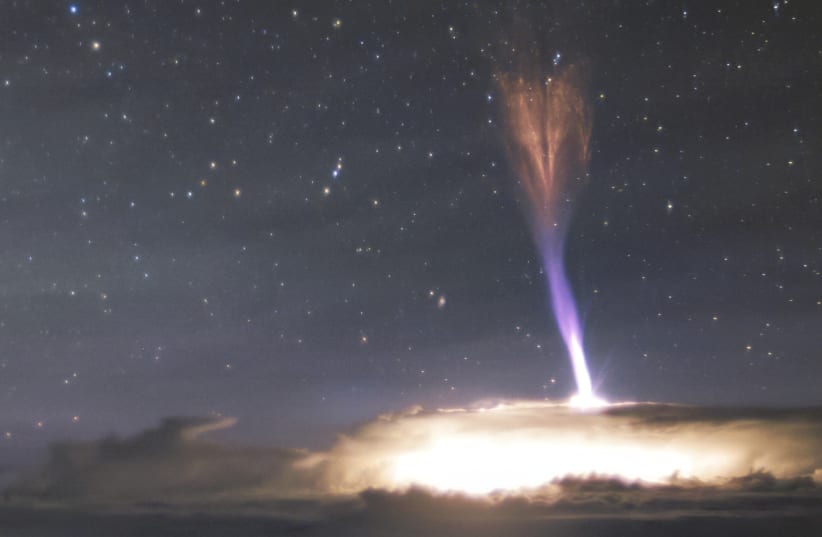Gigantic supercharged lightning bolt jets were mapped out for the first time in a study published on Wednesday.
Researchers examined the most powerful gigantic jet studied yet, which occurred in Oklahoma with 100 times more electrical charge than a regular lightning bolt.
In the peer-reviewed study, published in the journal Science Advances, researchers created a three-dimensional map of the Oklahoma jet, according to corresponding author Levi Boggs, a scientist at the Georgia Tech Research Institute.
“We were able to map this gigantic jet in three dimensions with really high-quality data,” Boggs said. “We were able to see very high frequency (VHF) sources above the cloud top, which had not been seen before with this level of detail. Using satellite and radar data, we were able to learn where the very hot leader portion of the discharge was located above the cloud.”
As the Oklahoma jet emerged from the top of a cloud, the researchers detected multiple very high frequency (VHF) radio sources at an altitude of 22-45km, as well as simultaneous optical emissions near the top of the cloud at an altitude of 15-20 km. This indicated that the VHF sources were produced by small structures at the tip of the lightning bolt called streamers and that the streamer discharge activity can reach all the way from the top of the cloud to the ionosphere, according to the study.
Streamers and leaders
Furthermore, The data from the 3D radio and optical emissions suggested that networks of VHF lightning detect emissions from the top of the streamers, not the leader, a current that flows behind the tip.
“The radio and optical data show the first clear evidence that the VHF observed by lightning networks is produced by streamers ahead of the leader,” the study read.
Study co-author Doug Mach of the Universities Space Research Association (USRA) emphasized the study's novel approach to using 3D mapping to determine that the lightning's optical emissions occurred far above the top of the clouds.
“The fact that the gigantic jet was detected by several systems, including the Lightning Mapping Array and two geostationary optical lightning instruments, was a unique event and gives us a lot more information on gigantic jets.”
Doug Mach
“The fact that the gigantic jet was detected by several systems, including the Lightning Mapping Array and two geostationary optical lightning instruments, was a unique event and gives us a lot more information on gigantic jets,” he said, adding, “More importantly, this is probably the first time that a gigantic jet has been three-dimensionally mapped above the clouds with the Geostationary Lightning Mapper (GLM) instrument set.”
According to the researchers, these findings may have a major impact on lightning physics in general.

